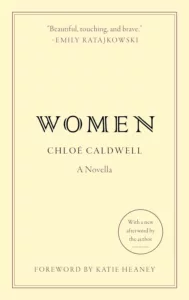Fantasy
In Japan, children hang dolls that look like little white ghosts outside their homes to wish for good weather the following day, say for a school picnic. The little ghosts are faceless, but if the following day is sunny, the children reward them by giving them smiley faces in black marker. The tradition is old, with records of these dolls existing from at least as early as the Edo Period (1603-1868) in Japan. Called “teru teru bozu” in Japanese, the dolls are representative of the age-old human desire spanning cultures around the world to control the environment. Of the many paths people have hacked through the jungle of history, that of human beings who have searched for ways to stretch the boundaries of what they hold dominion over is one of the most well-trodden.
God Spoke… “Land, appear!” And There It Was (Genesis 1:9)
The mid-19th to early 20th century were times of great land expansion in the United States. Two of the places I have spent most of my life in–the Back Bay neighborhood of Boston, Massachusetts and the whole region of South Florida, next to the Everglades–are the result of projects to alter the landscape of North America.
In the first instance, the motivation was finding housing for an exploding population. If you look at a map from before the mid-1800s, you will notice that Boston used to be smaller. Many of the major events of the American Revolution played out over an area that isn’t much bigger than 1.5 square miles. Around the mid-1800s when overcrowding in the city was becoming an issue, urban planners decided to repurpose landfill to create acres of new land upon which to build. This land of trash would be supported by giant wooden vertical posts that reached down through the water tables beneath the landfill to solid clay ground below. Covering the poles with water helped to avoid them decaying from exposure to microbes in dry air. This plan was ingenious. The urban planners found a purpose for trash, and in so doing created an entire new swath of land on which people could build homes and form communities. To this day, the Back Bay is considered one of the success stories of American urban planning. It is one of the most beautiful and highly sought-after communities in Boston and even the whole country.
In the second instance, the motivation was the potential South Florida held to make its prospectors a lot of money as a sort of homegrown vacation destination, a local alternative to tropical islands south of the continent and far away in the South Pacific. They had a vision of a paradise within the continental U.S. There was just one tiny problem–South Florida was all uninhabitable swampland. But these prospectors, having resolve, filled in miles of swampland in the Everglades with dirt, creating solid land which they could advertise as a respite from the cold to wealthy Americans everywhere.
Sacrifice
“Teru-teru-bōzu, teru bōzu Ashita tenki ni shite o-kure Itsuka no yume no sora no yō ni Haretara kin no suzu ageyo Teru-teru-bōzu, teru bōzu Ashita tenki ni shite o-kure Watashi no negai wo kiita nara Amai o-sake wo tanto nomasho Teru-teru-bōzu, teru bōzu Ashita tenki ni shite o-kure Sorete mo kumotte naitetara Sonata no kubi wo chon to kiru zo”
“Sunny, sunny monk boy, sunny monk boy, tomorrow, make the weather nice for me like a heavenly dream once upon a time. If it clears, I’ll give you a gold bell. Sunny, sunny monk boy, sunny monk boy, tomorrow, make the weather nice for me. If you listen to my wish, we’ll drink lots of sweet sake. Sunny, sunny monk boy, sunny monk boy, tomorrow, make the weather nice for me. If it should get cloudy and you weep, then I’ll cut off your head, snip!”
The teru teru bozu dolls are well-known among Japanese children; there is even a nursery rhyme about them. The legend goes that during the Edo Period in Japan, people prayed to a monk for sunny weather. However, the weather failed to improve, so they decapitated him. When they held his head up to the heavens, the sun finally came out. “Teru teru bozu” translates to “sunny, sunny monk-boy,” and the bald ghost-like dolls are meant to conjure up images of that poor monk from long ago. The sacrifice of the sunny, sunny, monk-boy repeats itself every time a child hangs up a teru teru bozu doll. If the dolls bring good weather, sake is poured over the dolls and they are washed away in the river as a way of celebrating their success. However, if the teru teru bozu doll fails, it too will have its head snipped off, just as the nursery rhyme warns. In other words, at least as far back as the Edo Period, humans already understood that there is no controlling the climate without risk, even sacrifice. This understanding was so deep, it even penetrated their fantasies of holding sway over the weather.
Then I Saw a New Heaven and a New Earth; For the First Heaven and the First Earth Passed Away (Revelation 21:1)
Hundreds of years after the Boston Back Bay and South Florida landfills, both areas are experiencing environmental issues.
In Florida, the water is slowly overtaking the land. South Florida, the most densely populated part of the state, will likely become uninhabitable over the next few decades. This is a consequence of properties and communities being built on land that is at water level between a swamp and the coastline. Not having received the memo about the human population encroaching on it, the Everglades continues to be a swamp, and its water as well as the ocean water on South Florida’s eastern and southern sides doesn’t have anywhere else to go.
In Boston, the root issue is another environmental problem, which would not have impacted the Back Bay so much if it was not built on tenuous ground. In recent years, Boston has experienced unprecedented levels of drought, which means that its water table has been dipping lower and lower. For the first time a few years ago, it came close to dipping low enough that it nearly exposed the tops of the posts that support the entire Back Bay. If this happens, it would be a dangerous situation since the poles would start to decay once exposed to dry air. The extreme result of the rotting of the Back Bay’s main support system, should Boston’s water level continue to decrease, will be the sliding of the entire multimillion-dollar neighborhood into the ocean.
The Anthropocene
Some scholars trace the origin of the teru-teru bozu dolls back even further than the story of the unfortunate bald monk in Edo Japan, when another method of imploring good weather was adapted from China during the Heian Period (749-1185). The practice involved tying the weather dolls to the end of a broom and “sweeping” the good spirits one’s way. In this case, the doll was not a monk but a young girl with a broom, whose tale was equally sad. According to legend, she was sacrificed during a long period of heavy rainfall so that she could ascend to the sky and sweep the rain clouds away. From that point on, people in China honored her sacrifice by making paper cutouts of her and hanging them outside to wish for good weather, much as the Japanese do with their “sunny, sunny monk” dolls. As much as they honor her, though, I imagine that this young woman’s last moments, if in fact she ever existed, must have been terrifying. I wonder if she would have agreed that ages of honor and veneration would make it worthwhile for her to lose her life prematurely for the dream of taming the weather.
Flash forward thousands of years, and human beings finally have what they have been wishing for since time immemorial. Human influence on the climate is so profound that a term exists to describe it now: “anthropocene,” meaning in plain terms “human.” First coined in the 1980s by Eugene F. Stoermer to refer to the impact of human activities on the environment, it was revived and popularized by Nobel-prize-winning chemist Paul Crutzen and others in the early 2000s, who have argued that the influence of humans on the environment has been so great as to constitute a new geological epoch. Most recently, the Anthropocene Working Group, a sub-division of the International Commission of Stratigraphy, has formally voted in favor of submitting a proposal to the latter to formally designate a new era.
Every time we make a decision that will exert a change on the climate, we are taking a risk that we will have to sacrifice something down the line, the cost of wielding such great power. Everybody knows that there is no gain without pain, and that you never get something for nothing. The mythos of the weather dolls in China and Japan reveals that an understanding of the high stakes of tampering with the climate is embedded into the human psyche, so much so that we cannot escape acknowledging the risk of eventual sacrifice when we do something so bold as to control the weather, even in our fantasies. So, the next time that someone goes to create land where there wasn’t any before, cut down some more trees, or release more greenhouse gases into the climate, they should be asking themselves what risk they are taking, what sacrifice they might be making. What is there to lose? As the teru-teru bozu nursery rhyme’s final line, “If it should get cloudy and you weep then I’ll cut off your head, snip!” reminds us, the stakes of gambling with the weather are frighteningly high.
***
Looking for your next book to read? Consider this…
Women, the exhilarating novella by Chloe Caldwell, is being reissued just in time to become your steamy summer read. The Los Angeles Review of books calls Caldwell “One of the most endearing and exciting writers of a generation.” Cheryl Strayed says ‘Her prose has a reckless beauty that feels to me like magic.” With a new afterward by the author, this reissue is one not to be missed.
***
Our friends at Corporeal Writing continue to offer some of the best programming for writers, thinkers, humans. This summer they are offering Midsummer Nights Film Club: What Movies Teach Us About Narrative. Great films and a sliding scale to allow everyone the opportunity to participate. The conversation will be stellar! Tell them we sent you!



